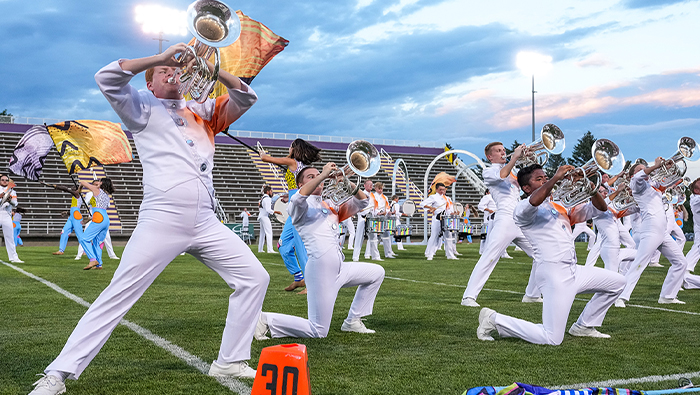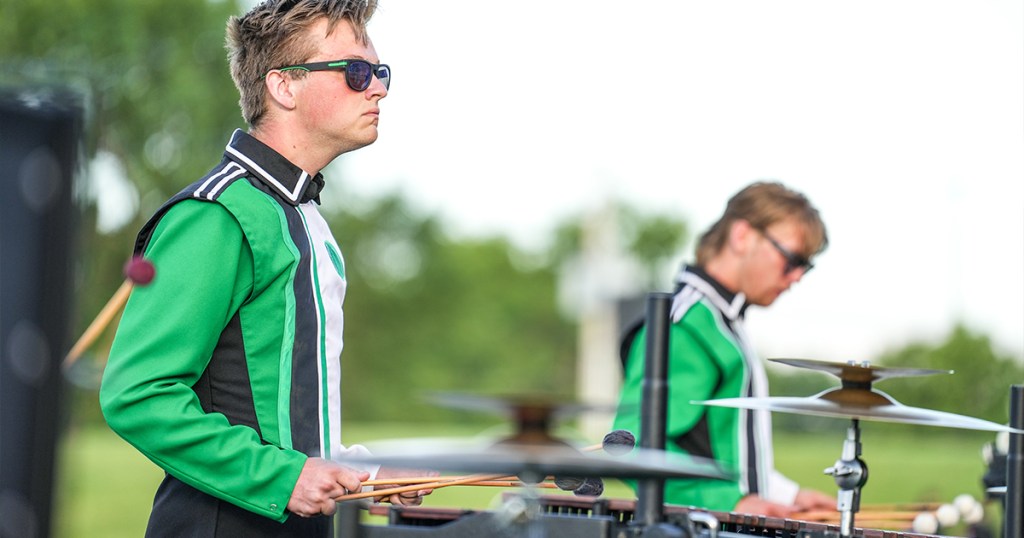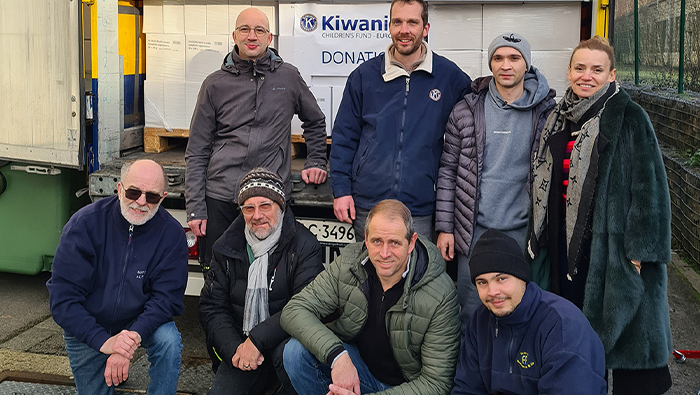
Drum corps competition and fundraiser marches into third decade
In Mankato, Minnesota, the Kiwanis Thunder of Drums draws up to 2,500 people each year.
By Julie Saetre
July evenings are generally quiet in Mankato, Minnesota, U.S., a riverside city in the southern part of the state. But for the last three-plus decades, one night has brought the noise: Kiwanis Thunder of Drums. Sponsored by the Mankato Kiwanis Club, the event is one in a series of competitions held by the nonprofit Drum Corps International (DCI).
Drum corps are marching bands that include only brass instrumentation ― you won’t see anyone playing flutes, clarinets, saxophones or other woodwinds. They’re also independent organizations, each with a limit of 150 members. (Marching bands sponsored by schools and universities include woodwinds and often are open to anyone who wants to play.)
For Mankato Kiwanians, it all started in the early 1990s. A club member’s son played in the Madison Scouts, which is a DCI founding member and two-time DCI World Champion title holder. So, the Kiwanians thought: Why not bring a drum corps competition to Mankato so the Madison Scouts can participate?
It was also an opportunity for the club, says Doug Foust, a member and head of the Thunder of Drums organizing committee.
“A part of it is that any proceeds above and beyond what it costs us to put on this show would support our various Kiwanis projects,” he says. “It seemed like a natural fit.”
The Mankato 77 Lancers, a music and marching program for Mankato Area Public Schools students, joined in as a partner and also benefits from event proceeds.
After a two-year interruption because of the COVID-19 pandemic, the Thunder triumphantly returned in 2022 and will take place for the 31st time this July 11. Around 2,500 guests attend each year.
Community support and partnership has been a key to Thunder’s longevity. The University of Minnesota provides use of its Blakeslee Stadium. Area high schools open cafeterias, gyms and football fields for participants to eat, sleep and practice. Others volunteer their services, from graphic design students who design and print marketing materials to a certified athletic trainer/emergency medical technician who is on hand in case of an injury or illness.
A local television station even supplies thousands of dollars’ worth of free advertising.
“It takes all of these folks in the community to really make this a success,” Foust says. “We’ve built up some really good partnerships. It makes putting on the show relatively easy year after year.”





